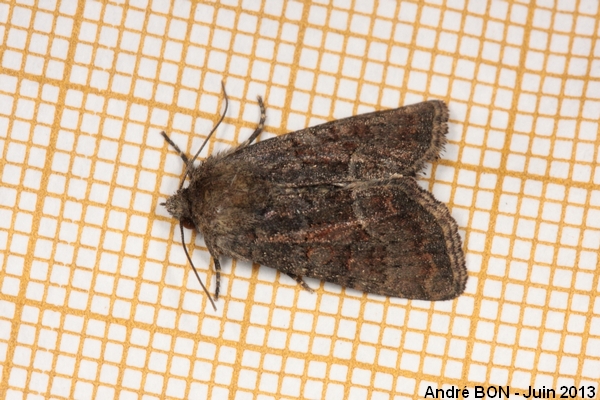
| Straw Underwing (Thalpophila matura (Hufnagel, 1766)) |

|
|
Scientific name: Thalpophila matura (Hufnagel, 1766) Common name: Straw Underwing French name: Noctuelle cythérée Order: Lepidoptera Suborder: Heterocera Family: Noctuidae Subfamily: Noctuinae Wingspan: 38-46 mm. Biotope: Dry meadows, woodland edges. Geographic area: Southern and central Europe, north to southern Sweden, east to southern Russia, to the Caucasus and to Asia Minor. North Africa. Flight time: June to September. Number of generations : 1 Caterpillar: Grey brown with a thin pale dorsal line outlined with dark interrupted lines. The lateral sides are marked with pale and dark longitudinal lines. The subdorsal and lateral lines are pale and outlined with dark lines. Host plant: Various grasses including those of the Dactylis genus. |
The Straw Underwing has grey brown coloured fore wings with darker markings and paler veins close to the margin. They are crossed by a thin whitish basal line outlined with black on the median side. This line is clearly serrated close to the inner edge and you can distinguish a W-shaped marking when the two fore wings are touching. The fore wings are also crossed by a thin whitish post-median line outlined with black on the median side. This line draws a rather regular wave like curve. The reniform and orbicular patches a bordered by more or less whitish colour and then by black colour with a more or less reddish centre. There is a third elongated patch with similar colours near the middle of the wing. The hind wings are straw yellow coloured with a broad blackish border on the margin side. The Straw Underwing over winters as a caterpillar. |
| [To know more about the Straw Underwing] [Top] |

|
I have first observed this Noctuidae moth on a wall. Then I pushed it on a graph paper sheet to measure its exact size. On this specimen, the whitish lines are slightly darkened and so they are less visible. The layout of the markings seems to perfectly match the Thalpophila matura species. I think that this is the dark form (texta) which has a rather northern range based on what I have read. |